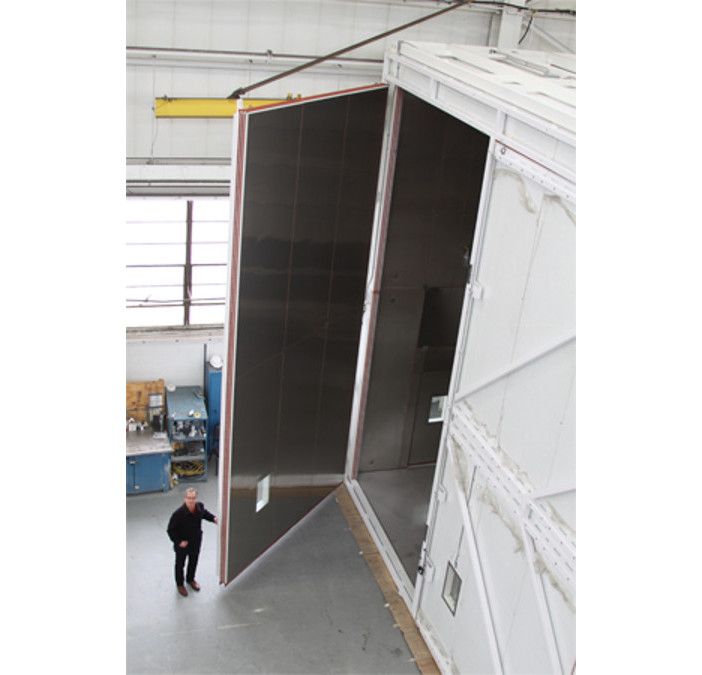The temperature cycling test chamber (Image: CSZ)
A large temperature cycling test chamber, installed by Gentherm company CSZ (Cincinnati Sub-Zero) at the Kennedy Space Center, is playing an integral role in a series of critical tests on the Orion spacecraft.
Orion will be used for manned missions to the Moon in 2023 and afterwards Mars. The spacecraft is undergoing a series of tests before its first unmanned mission in 2019, including structural and mechanical testing, vibration testing, temperature and humidity testing, pressure testing, acoustic testing and electrical systems testing.
Thermal cycle testing is a key aspect of NASA and Lockheed Martin’s overall test program and is used to ensure functionality and screen for potential workmanship defects.
The massive chamber, which was supplied by CSZ, has an interior volume over 15,000 cubic feet and is 25ft wide, 25ft high and 25ft deep. It has a temperature range of -20°F to +220°F.
The test chamber features large double doors measuring 24 x 24ft, a heavy-duty floor able to support a maximum load of 33,000 lb and 4,300psf, a custom-designed cooling system to mitigate the heat load and a HEPA air filtration system.
Steven Berke, president of CSZ, said, “We are excited to be part of the Orion spacecraft project and are also proud of our experienced team and ability to provide custom-designed testing solutions for our customers.”
Orion’s next test flight, Exploration Mission-1 (EM-1), will be the first integrated mission with the world’s most powerful rocket, the Space Launch System, where an un-crewed Orion will fly thousands of miles beyond the Moon during an approximately three-week mission. EM-1 is planned to launch in December 2019.
After that, EM-2, which is scheduled to launch in 2023, will be the first manned mission to near the Moon since 1972.
April 24, 2018





